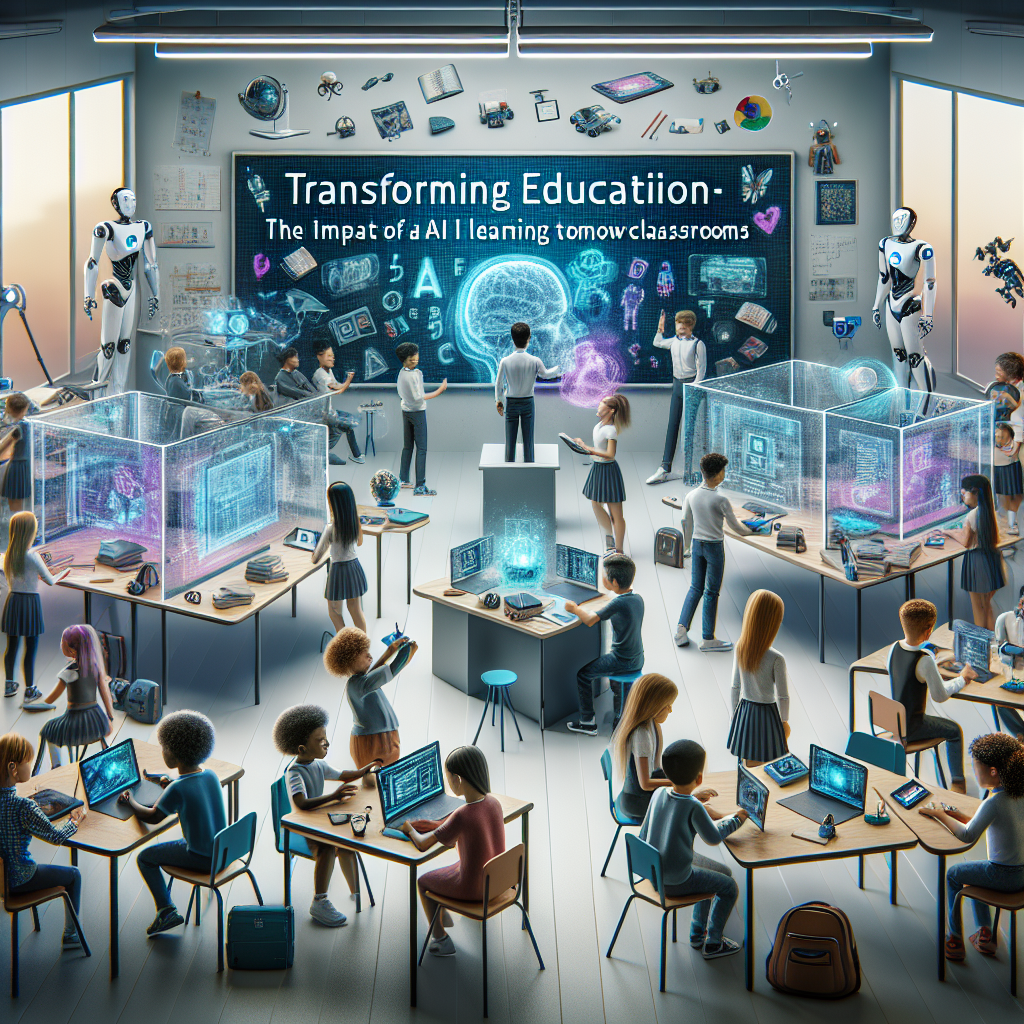In recent years, the educational landscape has experienced significant transformations fueled by advancements in technology. Among these innovations, Artificial Intelligence (AI) has emerged as a pivotal force, fundamentally altering the ways students learn and educators teach. As conventional classrooms evolve into dynamic learning spaces, AI-driven educational tools are leading the charge, providing personalized learning experiences, enhancing engagement, and equipping students for the future.
The Ascendance of AI in Education
The role of AI in education represents more than just a passing trend; it’s a fundamental shift. From intelligent tutoring systems to AI-enhanced analytics, these tools are crafted to optimize the learning journey. With increased accessibility, schools, colleges, and universities are progressively integrating these technologies to accommodate diverse learning needs.
Tailored Learning Experiences
One of AI’s most significant contributions to education is its capacity to customize learning experiences. Traditional uniform methods are being replaced by personalized curricula that adjust to individual students’ strengths and weaknesses. AI algorithms analyze student performance, pinpointing areas of struggle, which enables educators to provide targeted support.
For instance, AI-powered platforms like DreamBox Learning and Knewton create adaptive learning paths that adjust in real-time based on a student’s interactions. This customized approach fosters deeper comprehension of subjects and encourages students to take ownership of their educational journeys.
Boosting Engagement Through Interactive Learning
AI technologies are also elevating student engagement through interactive learning experiences. Chatbots, virtual reality (VR), and augmented reality (AR) are making education more immersive and compelling. For example, platforms such as ENGAGE facilitate VR classrooms, simulating real-world scenarios that make learning more relatable and exciting.
Additionally, gamification—integrating game mechanics into educational settings—has seen significant enhancements through AI. Tools like Kahoot! employ AI to develop interactive quizzes and learning games, making education enjoyable and competitive, thus boosting student motivation.
Assisting Educators
While the spotlight often shines on the advantages AI brings to students, it also supports educators significantly. AI tools can streamline administrative tasks, liberating teachers to concentrate on instructional quality. For example, grading can be partially automated through AI systems, allowing educators to devote more time to individualized student interaction and instruction.
Moreover, AI can offer insights for professional development, helping teachers grasp their effectiveness and identify areas needing improvement. Learning analytics tools provide data-driven insights that empower educators to fine-tune their teaching strategies based on student feedback and outcomes.
Informed Decision-Making with Data
AI’s ability to process vast quantities of data enables educational institutions to make informed decisions. Schools can analyze patterns in student performance, attendance, and engagement, facilitating the identification of at-risk students and the implementation of timely support measures.
AI also helps optimize resource allocation, ensuring that funds, technology, and teaching materials are directed where they are most needed. This data-driven strategy fosters more effective educational policies and practices.
Equipping Students for a Digital Era
As the job market increasingly values tech-savvy individuals, incorporating AI into educational curricula equips students with vital skills for the future. Familiarity with AI and its applications is becoming essential, fostering innovative thinking and problem-solving abilities.
AI learning tools also promote collaboration and communication, aiding students in working effectively within team environments—skills that are crucial in today’s workplaces. This approach ensures that education is not merely about academic success but also about preparing students for life beyond the classroom.
Challenges and Ethical Considerations
Despite the vast potential of AI in education, its deployment presents challenges. Concerns regarding data privacy, equitable access, and potential bias in AI algorithms require careful consideration. Educators and administrators must navigate these complexities to ensure AI tools enhance learning for all students, regardless of their background or circumstances.
The Future of AI in Education
Looking ahead, the future of AI in education promises even more groundbreaking advancements. As technology continues to progress, we can anticipate increasingly sophisticated learning tools, such as AI-driven virtual assistants that provide real-time feedback and support.
Additionally, as educators and technology developers work together, we can envision an education system that integrates cutting-edge AI tools with traditional teaching methods, creating a comprehensive learning environment that prioritizes student success.
Conclusion
AI learning tools are revolutionizing classrooms, transforming the educational experience for both students and educators. By harnessing the potential of these technologies, we can foster a more personalized, engaging, and efficient learning environment that prepares students for their futures in a rapidly evolving digital world. This journey has just begun, and the possibilities are boundless. Embracing this technological evolution in education is not only advantageous but vital for the next generation.

